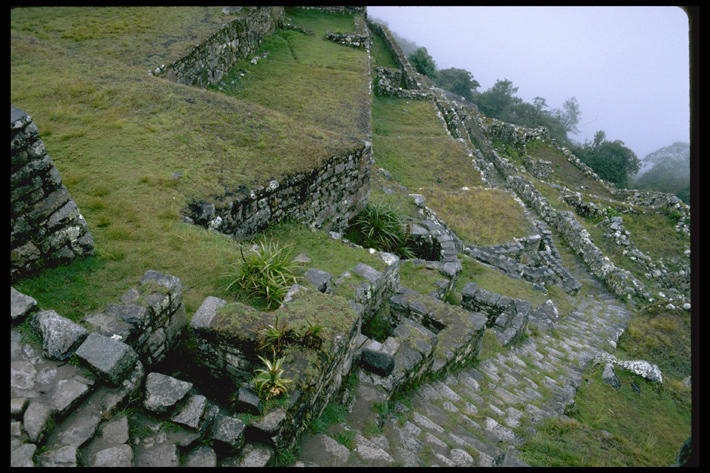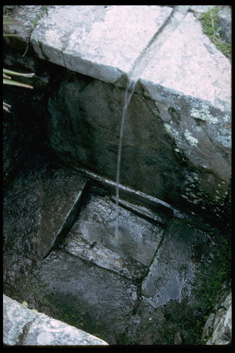Latin America
Related: About this forumInca Ritual Baths Fed by Waterfall Reveals More of Its Secrets
By Laura Geggel, Senior Writer | February 22, 2019 04:10pm ET
- click for image -
https://img.purch.com/h/1400/aHR0cDovL3d3dy5saXZlc2NpZW5jZS5jb20vaW1hZ2VzL2kvMDAwLzEwNC80NDIvb3JpZ2luYWwvQ2hhY2hhYmFtYmEtSW5jYS1leGNhdmF0aW9uLmpwZw==
Archaeologists excavate the ceremonial complex in Chachabamba, located within Machu Picchu National Park in Peru.
Credit: Dominika Sieczkowska
Deep in Peru's Sacred Valley, a ceremonial Inca complex — complete with a stone altar and 14 baths — sits in a jungle clearing. And now, cutting-edge radar and laser scans, and on-the-ground excavations are revealing just how the Inca built and used these structures more than 500 years ago.
The excavation is a thorough one; ground-penetrating radar detected the foundations of the complex, and billions of laser scans shot from an airborne drone revealed two previously unknown Inca structures hidden in the tropical forest.
Moreover, excavations at the site revealed how the Inca built and used the ceremonial baths, said project researcher Mariusz Ziółkowski, the head of the Center of Andean Studies at the University of Warsaw in Cusco, Peru. [In Photos: Digging Up Incan Fortresses]
New radiocarbon testing suggests that the site dates back to the 15th century, before Europeans landed in the New World, Ziółkowski added.
- click for image -
https://img.purch.com/h/1400/aHR0cDovL3d3dy5saXZlc2NpZW5jZS5jb20vaW1hZ2VzL2kvMDAwLzEwNC80NDMvb3JpZ2luYWwvSW5jYS1jZXJlbW9uaWFsLWNvbXBsZXguanBnPzE1NTA4Njk2Nzc=
The jungle towers behind the ceremonial stone complex at Chachabamba.
Credit: Dominika Sieczkowska
More:
https://www.livescience.com/64845-inca-ceremonial-baths-archaeology.html
Anthropology:
https://www.democraticunderground.com/12294506
Judi Lynn
(160,516 posts)Monday, February 25, 2019
CUSCO, PERU—Live Science reports that ground-penetrating radar and laser scans have revealed the foundations of buildings and two additional structures in Chachabamba, an Inca ceremonial complex located within Peru’s Machu Picchu National Park. The fifteenth-century site is known for its terraces, 14 baths laid out in two groups on either side of a sculptured sacred rock, and water system channels that carried water to the baths from a nearby waterfall. “This was undoubtedly a site of religious ceremonial use,” for the elites said Mariusz Ziółkowski of the University of Warsaw. Wastewater from the baths ran through a drainage system to a river in the lower valley. For more, go to “Machu Picchu's Stairway of Fountains.”
https://www.archaeology.org/news/7432-190225-peru-inca-baths
~ ~ ~
Machu Picchu's Stairway of Fountains
By JULIAN SMITH
January/February 2013

(Courtesy Tamara L. Bray)
The square chambers next to a staircase at the Inca city of Machu Picchu are part of an ingenious network of 16 fountains.
One of the most spectacular examples of Inca hydraulic engineering is the "Stairway of Fountains," built sometime after 1450 at the city of Machu Picchu. The fountains supplied the city's inhabitants with clean, fresh water. The first challenge the Inca faced was how to bring water from a pair of rain-fed springs almost half a mile away from the first fountain. At the main spring, Inca engineers built a 48-foot long permeable wall that concentrated the seeping water into a stone-lined canal. The canal also collected water from a second, smaller spring. Water flowed to the city through the canal, which averaged five inches wide and five inches deep, and had an average grade of about 3 percent. Hydraulic engineer Ken Wright calculates the system could carry up to 80 gallons per minute—twice as much water as the springs' typical peak flow—to prevent overflows.

(Courtesy Tamara L. Bray)
Each fountain produced a stream of water shaped to fill a water jug.
More:
https://www.archaeology.org/issues/59-1301/76-sidebars/394-machu-picchu-inca-hydraulic-engineering